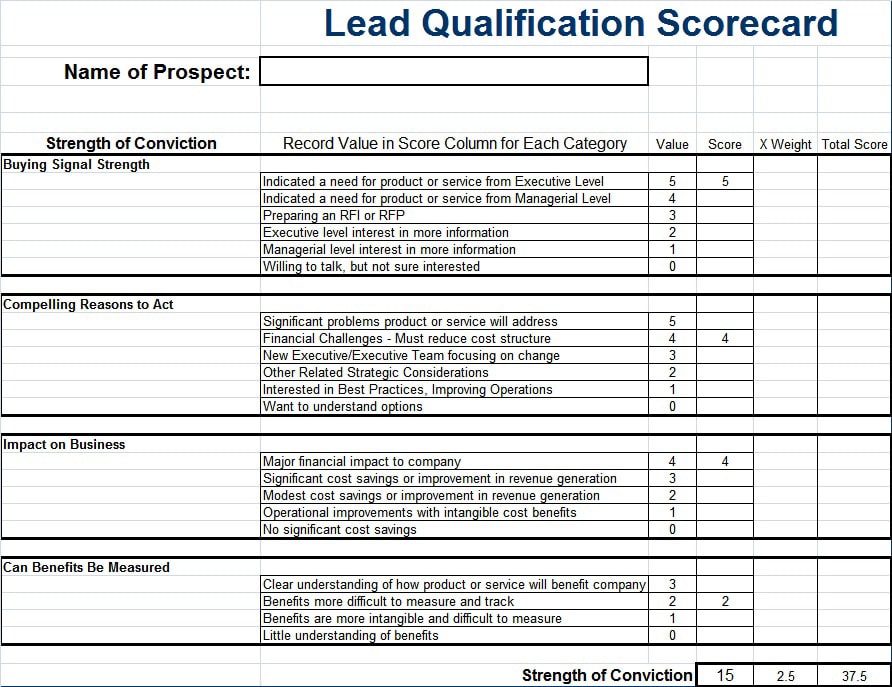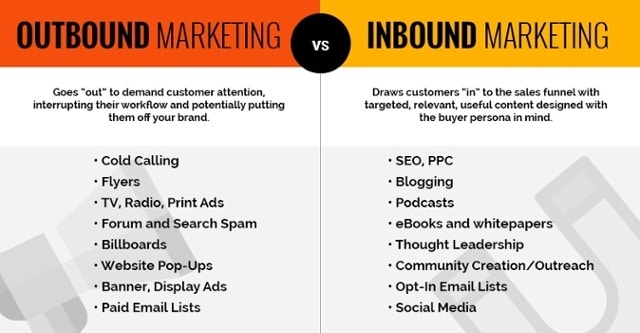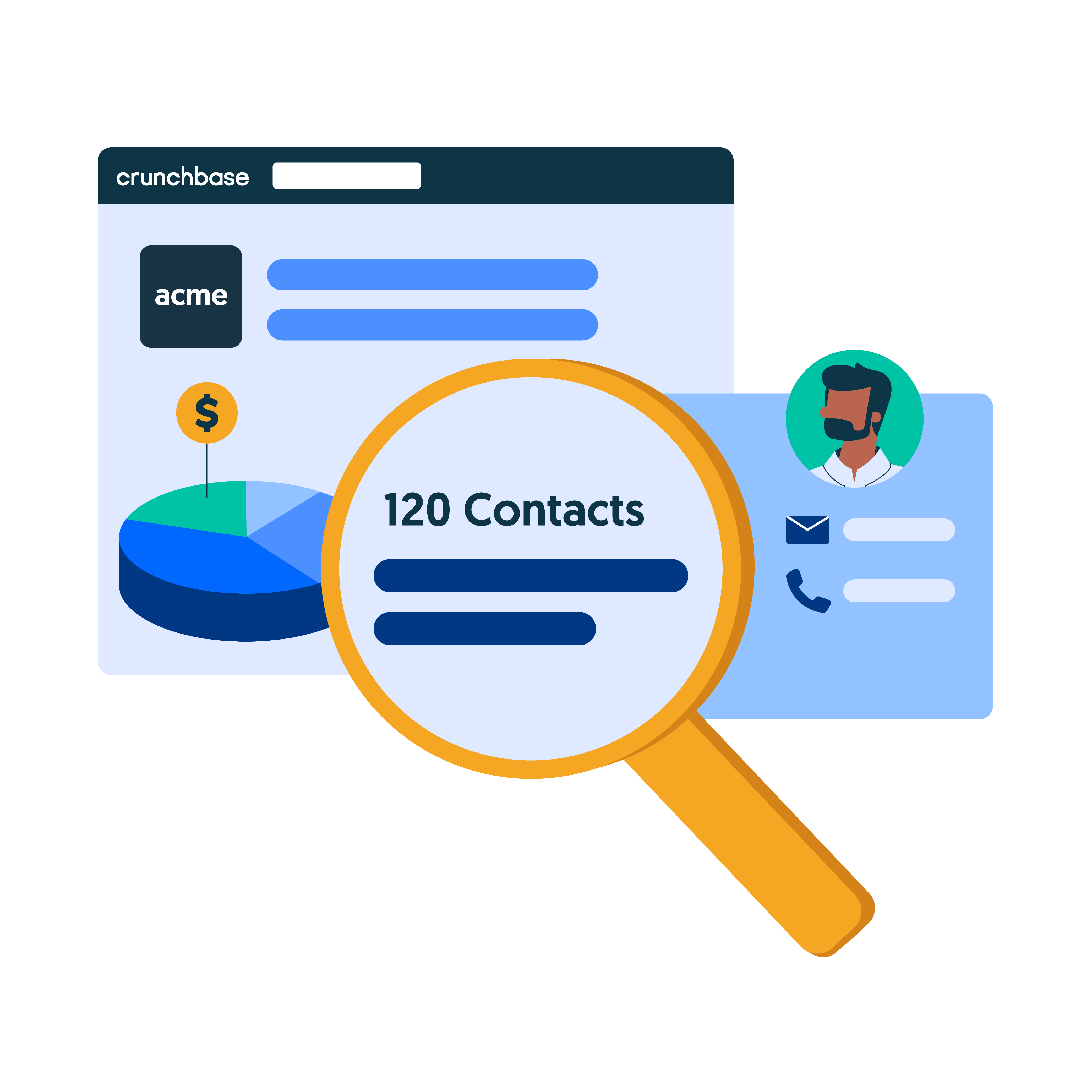Providing a helpful product or service is important. However, finding the people that need that product or service is just as important. Over the course of time, sales prospecting techniques have evolved, largely as a result of technology.
There is a multitude of aspects involved in prospecting from pre-outreach research to establishing a variety of acquisition channels. Now, more than ever, it’s important to be present in multiple prospecting channels such as social media, email and cold calling, just to name a few.
In this piece, we will review significant factors that impact your prospecting strategy and provide information on how to evaluate your current sales prospecting in addition to offering guidance on how to improve your results with the goal of converting more leads.
Boost your sales prospecting with Crunchbase Pro>
4 questions to evaluate your current sales prospecting techniques
With prospecting, the goal is to build a multi-channel approach. There are several solutions that can help attain this, but here are a few of the best sales prospecting tools that are particularly useful.
Beyond the tools, though, is the strategy. Your company may or may not currently have a clearly defined strategy, but here are a few questions to ask yourself when examining your internal process:
How do you find new customers?
Review the ways that you find new prospects or customers. This likely includes cold calling, cold emails, a corporate blog, or participating in networking events.
How do new customers find you?
Review the ways that customers looking for your product or service stumble upon your company. Your company’s website, social media or advertising often fall into this component.
How do you follow up?
Mastering follow-up communication is one of the most important sales prospecting techniques. It’s very rare that the first contact made with a prospect results in a closed deal. On average, it takes five follow-ups to a meeting before a contract is signed.
As a result, an effective and consistent system for following up can make the difference between successful and unsuccessful sales prospecting.
What additional information is available?
Since closing a sales deal often requires multiple touchpoints, it is important to provide complementary documentation. This can include product one-sheeters, pamphlets, presentation decks, and other relevant resources. Sharing this information can help you remain top of mind between scheduled meetings.
Having a solid and coherent understanding of your own prospecting strategy is step number one. The next step is to compare that with best practices, and from that, determine what updates need to be made within your company.
What does effective sales prospecting look like?
You need to have certain conversations with your sales team in order to devise effective sales prospecting techniques for the company. The first conversation is around customer profiles.
Sales prospecting technique #1: Establish customer profiles
In order to know where to focus on prospecting efforts, you must first know what your customers look like. Take a look at your current customer database and evaluate the data points within them (such as company size, budget, date of the first contact, days between first and second contact, industry, etc.) and answer the following questions as thoroughly as possible:
Sales prospecting tip: Who are your best customers and what do they have in common?
Review which of your current customers do the most business with you in terms of sales volume, sales frequency, and cross-sell and up-sell potential. Once you have them identified, analyze which factors make those customers similar. Identify 3-5 factors that these top customers share and use this information to rank prospects.
Sales prospecting tip: Who are your worst customers and what do they have in common?
Do the same exercise as above but with the current customers, or even past customers, that your product or service hasn’t performed well with. Build a profile of factors that will de-prioritize prospects that typically don’t perform well with your company.
Sales prospecting tip: Who are your unqualified prospects?
Apply the same idea to prospects that at one point entered your system but never advanced beyond the first few prospecting stages. The faster a prospect can be identified as unqualified, the better. No one wants to dedicate time to a lost opportunity for reasons that could have been identified in the early prospecting stages.
Sales prospecting tip: Apply profiles of existing customers to prospects.
Once you know which factors make for a good customer and a bad customer, you can use tools like Crunchbase Pro to build a lead list based on your desired prospect profile including industry, territory, funding, and much more. After you’ve built your list, apply the profile characteristics to the prospects in your current pipeline.
The biggest sales prospecting tip is prioritization. Applying a profile will enable you to prioritize which ones to approach first. Low priority prospects should still be contacted, but higher ranking prospects are more likely to close, and therefore, require more immediate attention.
Sales prospecting technique #2: Adopt prospect rankings and how to manage your sales funnel
First, it’s important to understand the difference between low ranked prospects and unqualified ones. A great sales prospecting tip is that low ranking prospects fall into a bucket that, based on your own historical data, indicates that they are not likely to largely impact your sales funnel.


Unqualified prospects, however, are ones that you know won’t do business with you. Characteristics of unqualified prospects can be geography, budget, or industry. From a business development perspective, this information can still be useful in developing new products or services or improving existing ones, but in terms of sales, these records aren’t useful.
Once customer profiles have been identified and applied to the customer and prospect records in your database, build your prospecting lists based on the profile that they meet. Depending on the number of factors that are included across all profiles, it may be helpful to set up a ranking system, or a score that will quickly deduce the potential of a prospect.
How to build a ranking system
For example, you may know that company size and having a current product are the most important qualifiers of a good prospect. Those values may be given 10 points.
In comparison, budget considerations may be weighted at five because you offer products at a wide range of prices. You may even implement a sliding scale based on factors like geography.
With prospects broken out into segments, this allows for a lot of flexibility as far as how to approach them. For example, you may have a particular sales agent that specializes in conveying your value position to skeptics who is assigned to cold or lukewarm prospects. In the same vein, you may have a strong closer who you assign to the hot leads. Knowing the strengths of your sales team can ensure that potential sales opportunities are given the best chance to succeed.
Sales prospecting technique #3: Automatically rank new prospects
Once a ranking system is established, you may want to find a lead management solution to prioritize new prospects automatically. Most lead management systems, including most CRM (customer relationship management) systems, can do the manual work for you, minimizing wasted time and the potential for human error.
Once integrated with other inbound sales mechanisms, utilizing a more automated solution like this can provide a boost to efficiency within your sales cycle.
Sales prospecting technique #4: Integrate outbound and inbound prospecting
Regardless of what your company offers, prospects are bombarded with sales opportunities. Your company needs to be included in as many of those channels as possible. While older prospecting techniques like cold calling are always available, the yield is low and engaging with prospects in other ways may prove to be more beneficial.
Things to consider as sales prospecting techniques:
Sales prospecting tip: Don’t JUST cold call.
Cold calling is the most easily accessible outbound sales method, but a Baylor University study shows that cold callers need to be prepared for rejection. In their two week study of cold callers, a total of 6,264 calls were made, resulting in just 19 appointments (0.3%). Cold calling takes effort and can result in high-quality deals, but it shouldn’t be the only part of your sales prospecting strategy.
Sales prospecting tip:Utilize social media.
Many prospects doing research on new purchases will scour the internet looking for additional information as well as customer reviews. Be on social media platforms and harbor engagement. Being active on social media gives prospects the opportunity to see and interact with your company on a deeper level.
Crunchbase Pro is a sales prospecting tool that helps sales teams find prospects who best fit their target audience. By adding various filters, salespeople know who to proactively connect with on these various platforms.
Sales prospecting tip: Try social ads.
A great sales prospecting technique is to utilize social ads. Many of the social media networks that have ads platforms allow for very specific targeting that can give your company unparalleled visibility to people that meet your ideal company profile.
You can surface an ad to those who sign up for your weekly newsletter, for instance. Tools like Hootsuite, Sprout and several others have platforms and tips for how to get this started.
Sales prospecting tip: Start a company blog.
Build trust with content. Highlight key customers, share industry news, or give insights on company offers with your company blog.
Keep in mind that for this type of content, potential buyers are not looking for a sales pitch. Instead, they want to ensure that your company is legitimate and reliable. Most website platforms like WordPress, Squarespace, and Wix have blog features and third-party sites like Medium can also be coupled with your company’s website to make this happen.
Sales prospecting tips: Monitor key buy signals as a sales prospecting technique
A trigger event, also known as a buy signal, often marks sales opportunities for your team. A trigger event or major changes such as funding raised, mergers and acquisitions or executive turnover should be monitored.
In addition to monitoring industry headlines, Crunchbase Pro can also help give you insight into information that you might not always find easily online.
These outbound strategies can overlap with inbound strategies, as well. While it is important to see outbound and inbound prospecting as their own separate strategies, don’t be afraid if you notice the two mergings every once in awhile.


Sales prospecting technique #5: Master inbound prospecting best practices
Inbound sales and outbound sales are becoming increasingly blurred.
Let’s say a sales agent cold calls a warm prospect and leaves a voicemail. That prospect may hear the voicemail, visit your website, and subscribe to your blog. How you classify that prospect acquisition is an internal decision. However, either way, it’s crucial to have effective inbound and outbound strategies.
Crucial sales prospecting techniques for inbound prospecting:
Sales prospecting tip: Give prospects an opportunity to contact you in as many places as possible.
Any places online that your company has a presence needs to include a way for people to contact you. You may not have as much information about a prospect from one of those channels. However, this provides an opportunity to follow up and get it, while also hopefully starting some sort of relationship.
Sales prospecting tip: Engage with prospects while they’re already looking at you.
The analytics that comes from sources like website tracking and social media engagement allows for unprecedented immediacy. Technology, such as Queues by Salesforce, exists that will alert salespeople when a new person signs up for more information on your website and adds them to their call list.
Reaching out with a phone call or email within minutes of someone viewing your website shows your attention to detail. Additionally, it also captures the prospect while they’re actively looking for information.
Sales prospecting tip: Utilize a CRM to automate the customer experience.
As your company grows, responding to each new inbound lead can become more and more difficult to do. This is when the power behind CRM systems can assist. Automate administrative tasks while still maintaining the experience you want to provide to prospects.
For example, set up a flow to send a welcome email to anyone that fills out your Contact Us form. Include an attached one-sheeter, an embedded YouTube testimonial from a satisfied customer, and links to your social media.
With a CRM, you’re creating a positive prospect experience from the very beginning with minimal effort. This is a sales prospecting technique that’s a clear win-win.







